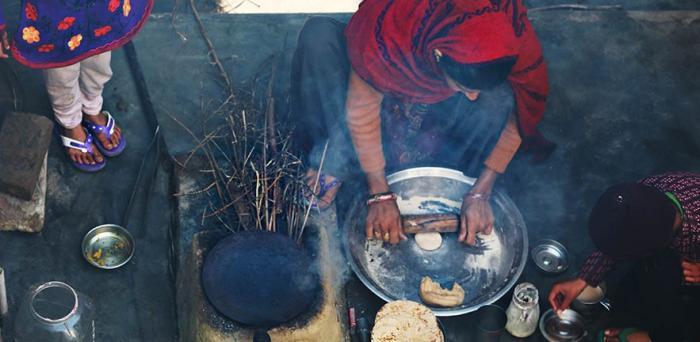"Bollywood isn’t usually associated with energy research, but this study takes a very novel approach to study social science through film,” says co-author Jaideep Prabhu, Professor of Marketing and Director of the Centre for India & Global Business at Cambridge Judge Business School.
“While the narrative of feature films is made up, the sets, especially in the so-called ‘parallel cinema’, are often very careful recreations of how things looked and people behaved at a particular point in time. By applying computer-based text and visual processing tools we can mine these films for the secrets they hold. The study shows how much insight into human behaviour we can get from a seemingly non-obvious source of data and analysis.”
The study by academics at the Department of Architecture and Cambridge Judge Business School at the University of Cambridge is published in the November 2020 issue of the journal Energy Research & Social Sciences. The research was sponsored by the UKRI Global Challenges Research Fund (GCRF) of the University of Cambridge and builds on CineMuseSpace research funded by the Arts and Humanities Research Council (AHRC) in the UK.
Measuring human behaviour such as energy use usually involves conducting time-consuming, costly and inaccurate surveys. This is particularly true in the developing world due to relatively low levels of literacy and the lack of infrastructure. Surveys are also subject to bias as people may not remember their behaviour accurately or may tell researchers what they think they want to hear, and such surveys provide only a snapshot rather than a dynamic picture over a period of time.
The new study instead relies on 19 Indian feature films across four decades selected in consultation with Ashish Rajadhyaksha, the author of the Encyclopaedia of Indian Cinema.
The films include Piya Ka Ghar, directed by Basu Chatterjee in 1972; Katha by Sai Paranjape in 1983, Satya by Ram Gopal Varma in 1998, and Gully Boy by Zoya Akhtar in 2019. While the films studied are from the less commercial parallel cinema tradition that reflects the greater realism seen in European films in the second half of the 20th Century, the more recent films in the sample, such as Gully Boy, potentially blur the lines between commercial Bollywood and parallel cinema.
The study then compiled a detailed keyword ontology in order to identify practices, technologies and energy use at home based on the 19 films set in chawl housing in Mumbai (typically late 19th Century apartments built to house migrant textile workers). The ontology was then applied to the film fragments that allowed researchers to map the presence and use of domestic technologies in the film including where and how such practices were performed.
The 854 keywords were arranged in categories such as “lived space” (bedroom, balcony, kitchen, courtyard) and “technology” (oven, remote control, doorbell, fan). The keyword ontology then focused on three elements: circadian rhythms in relation to seasons, time of the day, weather and bodily rhythms; the environment as examined from occupancy patterns to architectural features; and everyday practices as annotated by furniture, clothing and technology. The coding was followed by site observations in Mumbai and a second viewing of the films to draw on the on-site fieldwork.
The key findings demonstrate the impact of increasing affluence on the use of energy and household appliances. Between the 1970s and the 1990s, the devices that people living in chawls used appears to depict a low-income status. However, from 2000 onwards, the device range shows a similarity in assets in low to middle-income households. Accordingly, the energy footprint appears to be increasing among people belonging to the bottom of the pyramid.
“Predicting the future of energy demand lies in understanding the everyday life that sources domestic energy consumption,” the study says. “Yet approaches to effectively capture everyday life in domestic environments are a blind spot in current energy research.
“Movies are not produced in a social vacuum and reflect the values of the social milieu in which they are made, revealing social structures at home,” the study says. This highlights “the importance of arts and humanities research in mediating often highly technical approach of energy studies.”
The study – entitled “Films as source of everyday life and energy use: a case of Indian cinema” – is co-authored by Dr Minna Sunikka-Blank, Dr Ronita Bardhan, Dr Janina Schupp and Francois Penz of the Department of Architecture at the University of Cambridge, and by Jaideep Prabhu of Cambridge Judge Business School.
